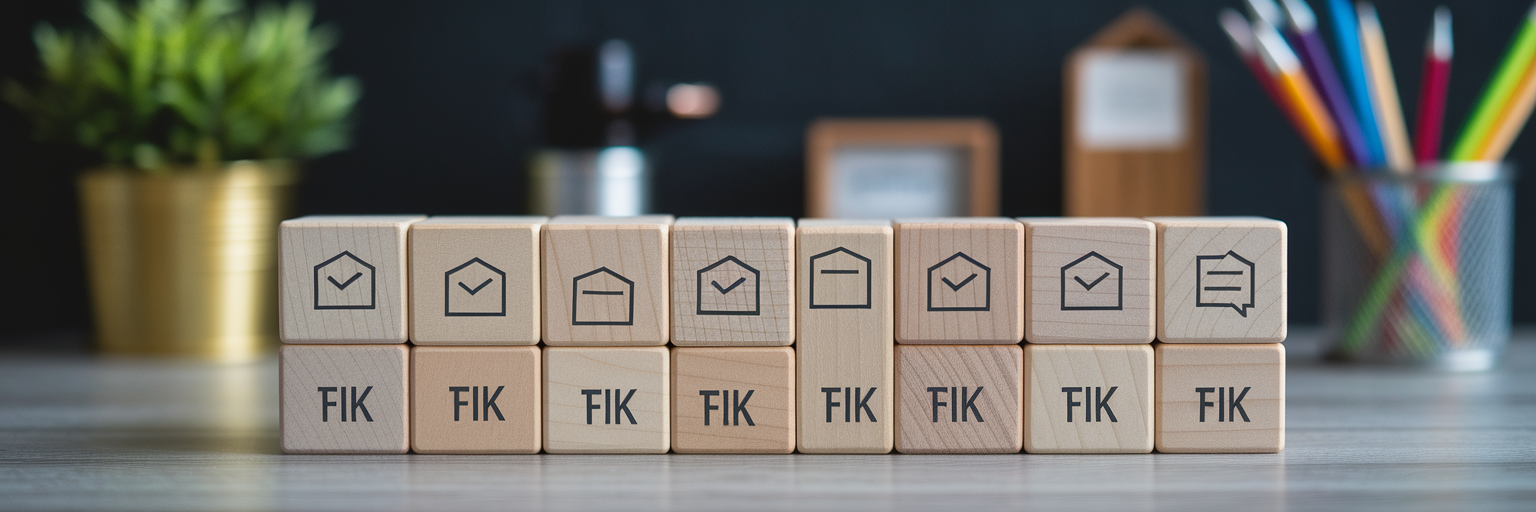10 Digital Alarm Hacks for Better Time Management
« Back to all blog postsDiscover 10 practical hacks using digital alarms to improve focus, manage tasks, build habits, and boost overall productivity. Simple tips for better time management.

Most of us carry a powerful time management tool in our pocket or have one sitting on our desk: the digital device.
While notifications often passively interrupt us, we can intentionally use digital alarms to bring structure to our days.
Think beyond the morning wake-up call.
Digital alarms are surprisingly versatile instruments for effective digital alarm time management.
Why Digital Alarms Are Your Time Management Ally
Their strength lies in customization. You can label them precisely, choose distinct sounds, set recurrences, and access them across phones, computers, and web tools like our comprehensive platform. This adaptability often makes them more practical than traditional clocks or planners for modern schedules. Psychologically, these external cues act like signposts, helping us build routines and maintain daily structure without constant mental effort.
Consider alarms not just as alerts, but as proactive partners in managing your time. Let’s explore 10 specific alarm clock hacks you can implement right away.
Hack 1: Time Blocking with Precision Alarms

Time blocking involves dedicating specific slots in your schedule for particular tasks. It sounds simple, but sticking to it can be tough. This is where alarms become powerful enforcers. Set an alarm for the start of each block and, crucially, another for the end.
Use distinct labels like “Deep Work: Report Draft Start” or “Client Calls Block End.” These specific cues prime your brain for the upcoming activity. Unlike a passive calendar entry, the alarm acts as a firm boundary, helping you commit to the planned task. This method actively combats the urge to multitask and fiercely protects your focus. You can easily set these intervals using a simple online timer tool. The core action is clear: use alarms to define the edges of your scheduled work periods.
Hack 2: The ‘Buffer Time’ Reminder
We’ve all felt it: the frantic rush from one meeting straight into another, with no time to breathe. Back-to-back scheduling often leads to stress and makes small delays snowball. The solution is building in ‘buffer time’ – short, planned gaps between activities.
Use alarms strategically for this. Set one 5-10 minutes before a meeting or task is scheduled to finish, labeled something like ‘Wrap Up Project Discussion’. Alternatively, set an alarm 5 minutes before the next commitment begins, labeled ‘Prepare for Team Sync’. This differs from time blocking alarms because its focus is purely on managing the transition. This simple schedule reminders alarm prevents rushing, allows for a mental reset, and absorbs those inevitable minor delays, keeping your day on track.
Hack 3: Pomodoro Technique Timers

The Pomodoro Technique is a popular method for maintaining concentration during long work sessions. It involves focused work intervals, typically 25 minutes, followed by short breaks. Digital alarms make implementing this technique straightforward.
Here’s how to set it up:
- Set a timer for your chosen work interval, say 25 minutes. Label it ‘Focus Sprint’.
- When the alarm sounds, immediately take a short break, perhaps 5 minutes. Set a separate timer for this break, labeled ‘Short Break’.
- Repeat this cycle. After completing 3 or 4 work sprints, take a longer break of 15-30 minutes, again using a timer.
Feel free to adjust the interval lengths to match your personal focus span. This structured approach is excellent for using alarms for focus and preventing mental fatigue. Tools like our dedicated Pomodoro timer can automate these cycles for you.
Hack 4: Habit Stacking Triggers
Building new habits can feel daunting. Habit stacking simplifies this by linking a new desired behavior to an existing routine you already perform consistently. Think of it like adding a new link to a chain.
Use alarms as the trigger for this new link. Identify an established routine, like finishing breakfast or your morning coffee. Set an alarm timed to go off immediately after that routine concludes, maybe just one or two minutes later. The key is to label the alarm with the specific new habit you want to perform, such as ‘Meditate 5 mins’ or ‘Review Daily Priorities’. This targeted reminder leverages the momentum of your existing behavior, making it easier to integrate the new habit seamlessly into your day.
Hack 5: The ‘Hard Stop’ Alarm for Meetings and Tasks

How often do meetings drift past their scheduled end time, or tasks expand to fill whatever time is available? This common problem eats into productivity and disrupts schedules. Implement a ‘hard stop’ alarm to enforce boundaries.
Unlike time blocking alarms that mark both start and end, or buffer alarms for transitions, this is a single, non-negotiable signal for conclusion. Set one distinct alarm for the exact scheduled end time of a meeting or focused work session. Consider using a more assertive sound to signify finality. This technique promotes efficiency by encouraging participants to wrap up concisely, respects everyone’s time, and prevents tasks from endlessly expanding. It’s a simple way to maintain schedule integrity.
Hack 6: Energy Level Management Alarms
Our energy levels naturally fluctuate throughout the day, often following predictable patterns known as ultradian rhythms. Fighting through low-energy periods can be counterproductive. Instead, work *with* your body’s natural cycles.
Start by noticing when you typically feel sharpest and when you tend to dip. Then, set alarms during anticipated low-energy times, perhaps mid-morning or mid-afternoon. Label these alarms with prompts like ‘Energy Check: Stretch & Hydrate’ or ‘Switch to Low-Focus Tasks’. Experiment to find what works for you. This approach uses alarms not just for external schedules, but as prompts tied to your internal state. Aligning tasks with your energy flow helps sustain productivity and prevent burnout.
Hack 7: Batch Processing Prompts

Constantly switching between different types of tasks, like checking email, then working on a report, then responding to messages, fragments your attention. Batch processing involves grouping similar small tasks and handling them together in dedicated blocks.
Use alarms to schedule and protect these ‘batch windows’. For example, set an alarm for ‘Email Batch: 11:00 AM – 11:30 AM’ and another for ‘Reply to Messages: 4:00 PM – 4:15 PM’. During these times, focus solely on that task type. Critically, try to silence notifications related to these tasks outside their designated windows. This differs from time blocking a single project; it’s about dedicating time to a category of work. This minimizes costly context switching and boosts efficiency for repetitive duties.
Hack 8: The ‘Review Your Day’ Reminder
Ending the workday abruptly often leaves loose ends and sets you up for a reactive morning. Instituting a brief end-of-day review provides closure and prepares you for tomorrow. An alarm can turn this valuable practice into a consistent habit.
Set a recurring daily schedule reminders alarm about 15-20 minutes before you plan to finish work. Label it clearly: ‘Daily Review & Plan Tomorrow’. When it rings, take that time to reflect on what you accomplished, identify any outstanding items that need carrying over, and briefly outline your main priorities for the next day. This simple routine reduces that feeling of morning uncertainty and helps you start the next day with clarity and purpose, rather than scrambling to figure out where you left off.
Hack 9: Wind-Down Routine Alarms

Just as you schedule your workday, structuring your evening can significantly improve sleep quality. A consistent wind-down routine signals to your body that it’s time to prepare for rest. Alarms can guide you through this process.
Instead of one jarring bedtime alarm, set a series of gentler alarms marking key stages of your evening routine. Consider using calming sounds for these. Here’s an example sequence:
- 9:00 PM: ‘Stop Screen Time / Dim Lights’
- 9:30 PM: ‘Read Book / Journal Entry’
- 10:00 PM: ‘Prepare for Bed / Light Stretching’
This sequence gently guides you towards relaxation, reducing the chances of getting lost scrolling or watching TV too late. It promotes consistency, which is crucial for regulating your sleep cycle and waking up refreshed.
Hack 10: Setting Intentions with Morning Alarms
Your first alarm of the day doesn’t have to be just a wake-up call. You can transform it into a tool for setting a positive and purposeful tone for the hours ahead. The trick lies in the alarm’s label.
Instead of the default ‘Alarm’, customize your primary wake-up alarm label with a short positive affirmation, your main focus for the day, or a key goal. Examples include: ‘Embrace Challenges Today’, ‘Focus on Project Alpha First’, or ‘Be Present in Meetings’. Seeing this message first thing helps frame your mindset proactively. You could even set a second alarm a few minutes later labeled ‘Mindful Morning Minute’ to prompt a brief moment of reflection before diving into the day’s demands.
Integrating Alarms into Your Time Management System
As these ten hacks demonstrate, digital alarms are far more adaptable than simple wake-up calls. They are versatile tools for implementing a wide range of productivity alarm techniques. Success with digital alarm time management hinges on consistency and personalization. Experiment with different labels, sounds, and timings to find what resonates with you.
Using integrated platforms that offer various timers—standard alarms, countdowns, Pomodoro timers, stopwatches—all in one place can simplify applying these strategies. Start small. Pick one or two alarm clock hacks that address your biggest time management challenges and commit to using them for a week. Observe the impact and adjust as needed. Time management is an ongoing practice, and simple, accessible tools like digital alarms, perhaps using features like our preset alarms for quick setup, can be surprisingly powerful allies in structuring your day effectively.
Summary of Digital Alarm Time Management Hacks
| Hack | Core Concept | Primary Benefit |
|---|---|---|
| 1. Time Blocking | Alarms define start/end of focused work blocks | Protects focus, prevents multitasking |
| 2. Buffer Time | Alarms signal transitions between tasks | Reduces rushing, allows mental reset |
| 3. Pomodoro Timers | Alarms structure work/break intervals | Sustains concentration, prevents burnout |
| 4. Habit Stacking | Alarms link new habits to existing routines | Leverages momentum to build habits |
| 5. Hard Stop | Alarm enforces a non-negotiable end time | Ensures efficiency, respects schedules |
| 6. Energy Management | Alarms prompt breaks/shifts based on energy | Maintains productivity via natural cycles |
| 7. Batch Processing | Alarms schedule time for similar tasks | Reduces context switching |
| 8. Daily Review | Alarm triggers end-of-day reflection/planning | Improves preparedness, reduces overwhelm |
| 9. Wind-Down Routine | Alarms guide evening pre-sleep steps | Promotes relaxation, better sleep |
| 10. Morning Intentions | Alarm label sets positive tone/focus | Starts the day with purpose |